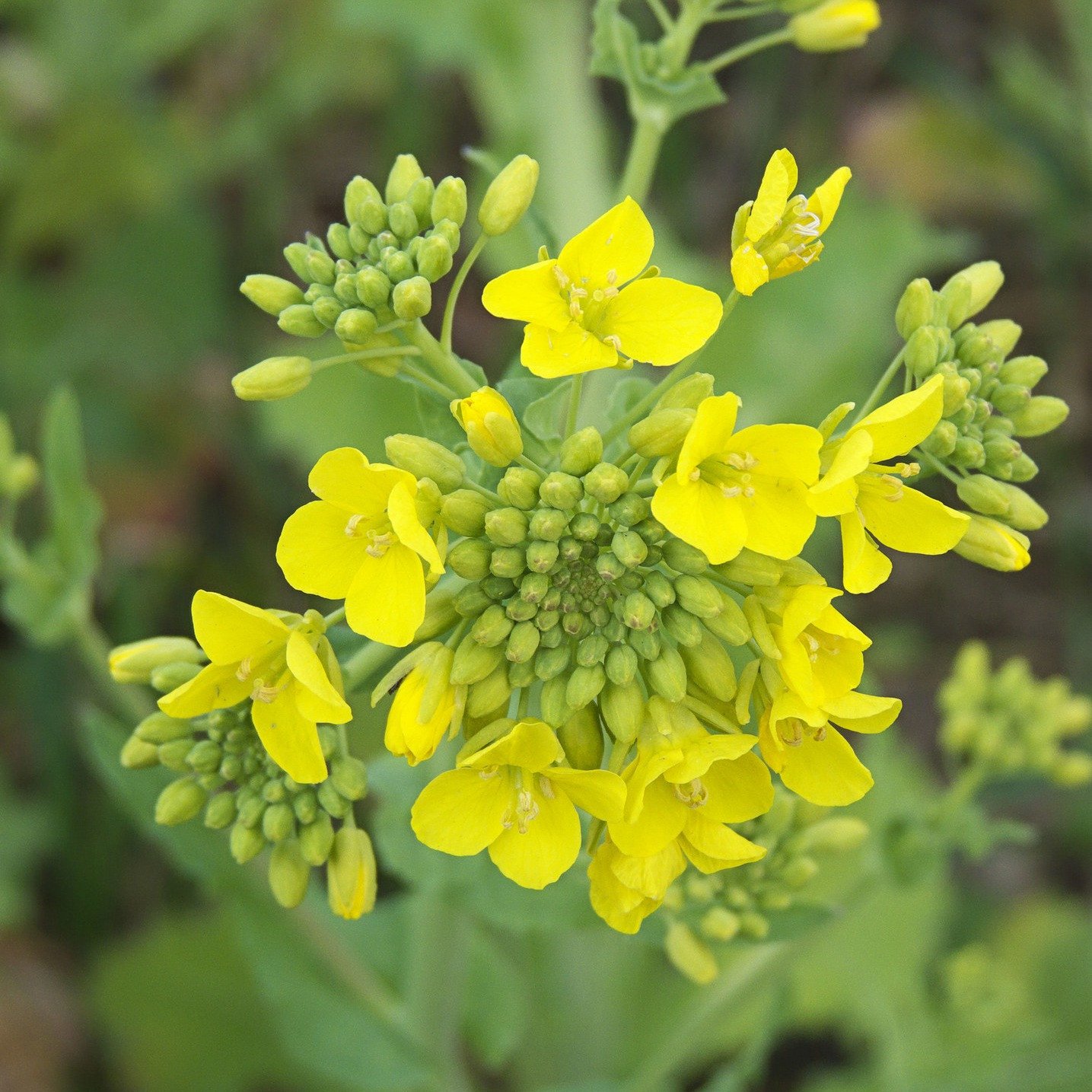Rübsen - Ölrübsen Standardsorte

Variety
Rübsen - Ölrübsen Standardsorte
Approved Data
created by Alex&Sempi at 19.11.2025
Features
Location
planting: bed
planting: outdoor
light: sunny to semi-shady
Soil: permeable soil
biotope: mountain area
Fertilization: single dose of compost
Fertilization: nutrient-rich
fertilization: humus-enriched
planting: suitable for year-round cultivation
Soil: all soil types
Soil: Well fertilized
soil moisture: fresh to moist
Soil: loamy
Soil: gravelly to sandy
Soil: good garden soil
Water: regularly
Soil: light to medium-heavy
Soil: sandy to loamy
Wind: windverträglich
pH value: acidic to neutral (5,5-7)
Pflanzung: Kräutergarten
Soil: loosened
fertilization: potassium-rich
Water: Adequate
fertilization: low-lime
Fertilization: moderate
pH value: neutral (7)
Water: moderately
Fertilization: nitrogen-rich
Fertilization: organic
Fertilization: mineral-based
Heat requirement: moderate
Biotop: Feld
Düngemittel: Hornspäne
Good companions: moisture-loving
Nachbarn schlecht: trockenheitsliebend
Nachbarn schlechte: Schattenpflanzen
Nachbarn schlechte: kalkliebend
Good companions: sun-loving
Nachbarn schlechte: stark wuchernd
Nachbarn schlechte: hoher nährstoffbedarf
Nachbarn gute: mit niedrigen Nährstoffbedarf
Nachbarn schlechte: hochwachsend
Nachbarn gute: niedrigwachsend
Pflanzung: Naturgarten
Düngung: NPK 12/4/6
Pflanzung: Hügelbeet
Boden: mittelgründig (30-60)
Herkunft: Züchtung
Düngemittel: Mist, Dung
Color
green
brown
golden yellow
medium green
Black seeded
yellow brown
Flower yellow
Fruit: yellow-green
Blattrippen: weiß
Oberfläche: matt
Frucht: grün
Stamm, Stiel: grün
Wurzel: weiß
Wurzel: cremeweiß
Wurzel: gelb
Blattrippen: grün
Samen: braun
Behaarung: silbergrau
Behaarung: weiß
Herbstfärbung: keine
Oberfläche: samtig
Oberfläche: rau
Growth habit
Winter variety
lifespan: biennial
growth habit: high
leaves: rosulate
growth habit: stable
growth habit: herbaceous
flower: flowering
root type: taproot
self-fruiting
Cold germination
fast growth
growth habit: sprawling
growth habit: rosette-shaped
cross-pollination
seed-fixed: yes
growth habit: upright slender
self-seeding
flower: continuous bloomer
growth habit: Trailing
Fragrant flowers
heigth: 100 - 120 cm
height: 80 - 100 cm
wide: 30 - 40 cm
wide: 20 - 30 cm
height: 30 - 40 cm
height: 120 - 140 cm
height: 60 - 80 cm
height: 40 - 60 cm
hermaphroditic
growth habit: upright flower stems
simple flower
small flowers
Hairy leaves
large leaves
strong growth
non-woody
propagation by seeds
perennial
insect pollination
Blütenstand: schirmtraubig
Summer variety
Blätter: eiförmig
Blütenstand: traubenförmig
Geschlechtertyp: einhäusig
Keimung: Dunkelkeimer
Wuchsform: krautig
Wuchs: nicht invasiv
Blätter: einfach
Schnitt: nicht erforderlich
Blätter: länglich
Ernteertrag: mittel
Seitentriebbildung: mäßig
Blätter: filzig
Blütenform: kreuzförmig
Blätter: gelappt
Taste
mild
Slightly bitter
mustard aroma
Slightly spicy
raw edible
cabbage flavor
Essbarkeit: Blätter
Essbarkeit: Samen
Konsistenz: ölhaltig
Fruit shape
elongated
slim
pod
medium-sized
Resistances
cold tolerant
resistant
robust
drought tolerant
weatherproof
heat tolerant
Cultivation Break
4 Years
Season Overview
Sowing
Harvest
Harvest
J
F
M
A
M
J
J
A
S
O
N
D
1ST YEAR
2ND YEAR
Description
The oilseed rape (Brassica rapa subsp. oleifera) is an oilseed from the cruciferous family, similar to the closely related rapeseed (Brassica napus). Both the seeds and the whole plant are usually called turnip rape, turnip seed or turnip seed - names that are also used for the superordinate species Brassica rapa. On the mountain road, it is also called turnip rape. Important distinguishing features from rapeseed are the fresh green, only slightly frosted, hairy leaves (in contrast to the bluish frosted, only sparsely hairy leaves of rapeseed) and the smaller, reticulated seeds which, in addition to being used to produce rapeseed oil, are also used as an ingredient in bird food mixtures (for canaries, for example). It is rather unpopular in many countries as it produces poorer harvests than the very similar rapeseed.
Non hybrid
Frostproof
Growing tips
bb
Details
Light requirement
Sunny
Water requirement
Moist
Soil
Medium (loamy)
Nutrient requirement
Medium
Dark germinator
Germination temperature
12 - 20 °C (Degrees Celsius)
Plant distance
20 cm
Row spacing
40 cm
Seeding depth
1.5 cm
Companion Plants
Barley
Bean ((Scarlet) runner bean)
Bean (Broad bean / Faba bean / Field bean)
Bean (Dwarf bean)
Bean (Hyacinth bean / Lablab-bean)
Bean (Lima Bean)
Bean (Runner bean)
Chives
Coriander / Cilantro
Dill
Garlic
Leeks
Lettuce (Common chicory)
Lettuce (Endive / Escarole / Erisée)
Lettuce (Lamb's lettuce)
Lettuce (Lettuce)
Lettuce (Puntarelle / Cicoria di catalogna / Cicoria asparago)
Lettuce (Radicchio / Italian chicory)
Lettuce (Sugar loaf)
Lupine / Bluebonnet
Oats
Onion
Onion (Spring onion)
Pea
Rye
Soybean
Spinach (Summer)
Spinach (Winter)
Sunflower
Sweet lupins
Antagonistic Plants
Abessinischer Kohl / Äthiopischer Senf
Aubergine / Eggplant
Broccoli
Broccoli raab / Stem cabbage / Cima di rapa
Brussels sprouts
Cabbage (Cabbage)
Cabbage (Pointed cabbage)
Cabbage (red cabbage)
Cabbage (Savoy cabbage)
Cauliflower
Collard greens
Collard greens (Kale)
Collard greens (Tuscan kale / Dinosaur kale / Palm tree kale)
Fennel
Florence fennel / Finocchio
Gemüsekohl - Flower Sprouts / Kohlröschen
Gemüsekohl - Futterkohl
Gemüsekohl - Kai-Lan / Chinesischer Brokkoli
Gemüsekohl - Rippenkohl / Portugiesischer Kohl
Gemüsekohl - Wildkohl / Urkohl
Kohlrabi / German turnip / Turnip cabbage
Meerkohl
Napa cabbage / Chinese cabbage
Okra
Pepper / Paprika
Radish
Radishes
Raps
Raps - Scheerkohl / Sibirischer Kohl
Rutabaga / Swedish turnip
Tomato (Bush tomato)
Tomato (Cocktail bush tomato)
Tomato (Cocktail Stake Tomato)
Tomato (Stake tomato)
Diseases
Root Rot
Club root of cabbage
Angular leaf spot of cucumber
Powdery mildews
Pests
Stem borers
Land snails
Leaf-miner flies
Flea beetles
Aphids
Voles